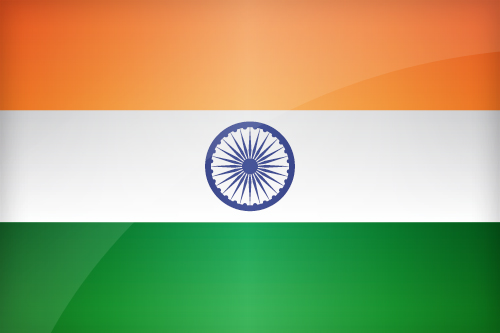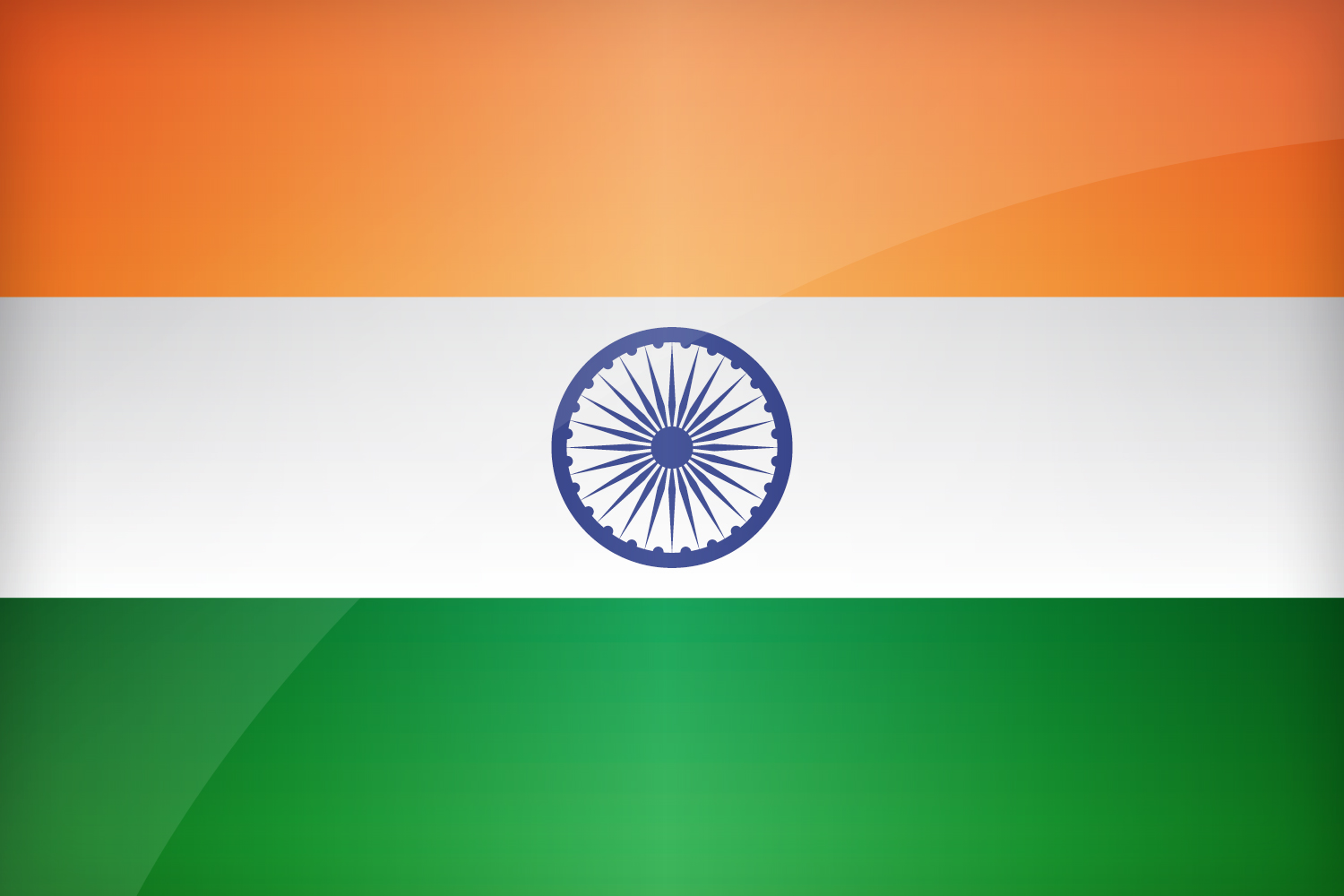India Flag
The explanation for the symbols of the Indian Flag
The flag of the Republic of India was adopted on 22 July 1947, just before the declaration of independence in August 1947. It consists in three horizontal stripes: orange (saffron) - white - green, a blue wheel with 24 spokes in the center. In India, the flag is always called “Tiranga”, which means tricolour. In India, there is a flag code, which is quite rare. This code requires that Indian flags can only be made from khadi, a local thread. The flag was designed by Pingali Venkayya, an ardent defender of freedom and human rights. This flag has a strong religious symbolism, as the colours refer to all religious communities present in India : saffron for Sikhism, white for Hinduism and green for Islam. To avoid tensions between communities, the government decided to justify these colours differently : saffron was used to symbolize the impartiality of the elite, the white for the light that guides the people, and green for country's natural wealth, and respect that it deserve. The wheel in the center evokes the Ashoka Chakra, which refer to dharma’s law, truth and virtue for all.
National Indian Flag
You can download it in different sizes, in a decidedly modern design for your personal use, or for wider use. India's flag is available in 4 different sizes.

Any use of our flags on the web has to lead to a link to this page as the source
If the use is made in the context of a site generating income, or for the purpose of generating income, a DMCA statement (Digital Millennium Copyright Act) will be filed.

